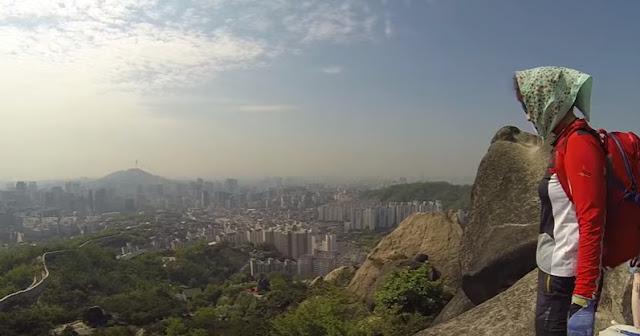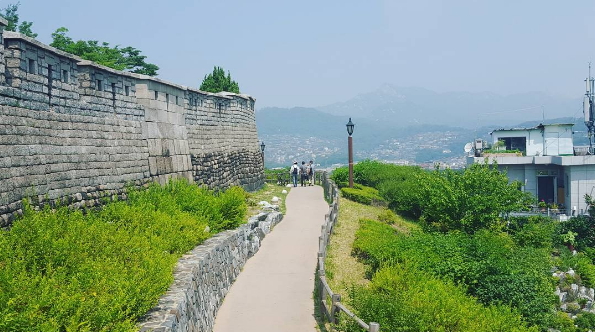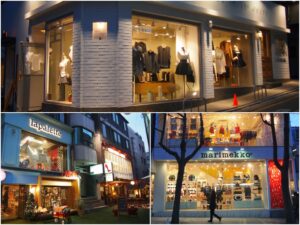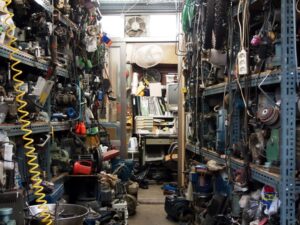The area around Dongnimmun is one of these places and a visit here is most certainly one way to better understand the tenacious mentality and steadfastness of the nation’s people.
Tastes of the Past
A walk down from Dongnimmun Station brings one to Daeseongjib, a hidden gem famous for its doganitang, or ox knee stew, that is hardly known to tourists. Sure, the dish’s name might not be all that appetizing, but this slow-cooked soup of beef and cartilage is just as delicious as it is nutritious.
Served with salt and chopped green onions on the side, it can be seasoned to taste, and pairs well with the restaurant’s spicy kimchi. The hole-in-the-wall atmosphere only adds to the appeal of Daeseongjib, which has been in operation for about 60 years now.
Cross the street and make your way to Yeongcheon Market, where covered stalls offer an abundance of colorful produce. Further down, an unexpectedly large market houses traditional fare: aromatic mountain herbs, jars of ginseng and an incalculable supply of pickled vegetables.
 |
| Photo Credit |
There are also quite a few atypical wares like finches and goldfish, which make for some pretty interesting travel photos. Snack on the market’s famous kkwabaegi (twisted doughnuts) before exploring the rest of the area.
The Darker Side of Seoul
Make your way to Independence Gate, from which Dongnimmun Station gets its name.
This triumphal arch was constructed in 1898 to replace Yeonggeun Gate, a symbol of the submissive diplomacy of Korea where foreign envoys had previously been received. The granite stones that comprise the monument, which is modeled after the Arc de Triomphe in Paris, remain a symbol of the nation’s strength and steadfastness through that harsh time in history. Near the gate stands a statue of renowned independence activist Dr. Seo Jae-pil, who initiated the construction of the gate.
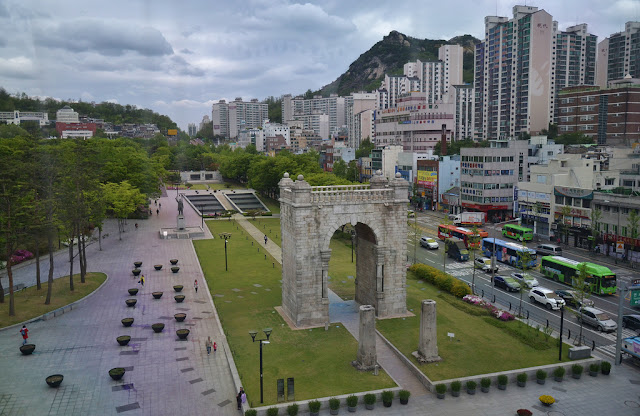 |
| Photo Credit |
Past the arch is Independence Park, a green space with plenty of areas to rest, picnic or play badminton. It is also chock full of memorials and tributes to Korea’s fight for sovereignty. Seodaemun Prison History Hall is the largest and perhaps most important of these.
Once a jail for Korean independence activists during Japanese colonial rule, it’s now both a history museum and a monument that celebrates Korea’s vigorous fight for freedom, and is dedicated to the movement’s martyrs.
The red brick buildings seem charming enough at first glance, but not enough to hide the terrors that occurred inside them. The prison cells, which have been converted into expansive educational exhibits, display pictures of the torture methods used by the Japanese against the unwavering freedom fighters. A noose still hangs in the building where executions were held and from it emanates a palpable dark energy.
Even more unsettling than the execution building is the corpse removal tunnel near the structure’s exit that was only just discovered in 1992. It was here that the Japanese attempted to cover up their horrendous actions. The museum is tragic, but enlightening in that it provides a unique glimpse into the troubles and triumphs the nation endured for their chance at independence.
A Shamanic Stroll
Just a short walk from the Seodaemun Prison is Inwangsan Mountain. It can be a bit tricky to find but the experience is well worth the effort. Follow the signs just outside exit 2 of Dongnimmun Station past the I’Park apartments to the wooden gate of the temple complex. Pass hand-painted murals of terrifying but beautiful tigers and guardians that are meant to ward off evil spirits to get to the main hiking path.
Inwangsan is a mountain not only known for its beauty, but also for its magnificently dressed shamanic inhabitants. Korean shamans, or mudang, are usually women and are seen as the intermediaries between humans and the heavenly gods and nature spirits.
They are easy to spot on the mountain, as they are often chanting or dancing to the cacophonous tunes of traditional instruments, performing gut. These services are held to bring luck, cure illnesses or exorcise evil spirits, and the place you’re most likely to experience one of these ceremonies is at Guksadang Shrine, not far from the complex entrance. The shrine is said to be the country’s most important shamanist structure, as it is believed to house the spirit of King Taejo, founder of the Joseon Dynasty.
The otherworldliness of the chanting is only enhanced by the mountain’s eerie rock formations. Seonbawi, or “Zen Rocks,” take the appearance of meditating robed monks and are a popular spot for women praying to have children, as they are associated with fertility. Still other boulders further up along the path resemble skulls and bats.
Despite these rather creepy associations, the mountain offers phenomenal views of downtown Seoul, while the peace and quiet, which is only occasionally interrupted by the ring of a gong or beats of a drum, is refreshing.
From this point, you can turn around and head back to the station or continue along the Seoul Fortress Wall for more fresh air and city views. Just be sure that you wear decent walking shoes and bring along plenty of water, as the trek can get steep and uneven in some parts. Follow the signs labeled “Changuimun Gate” to get to Buam-dong, where mountainside cafes and quaint galleries await.
To Get There: Take the Seoul subway to Dongnimmun Station (Line 3, Exit 3).
Words and photos by Mimsie Ladner of Seoul Searching unless otherwise noted. Content may not be reproduced unless authorized.





